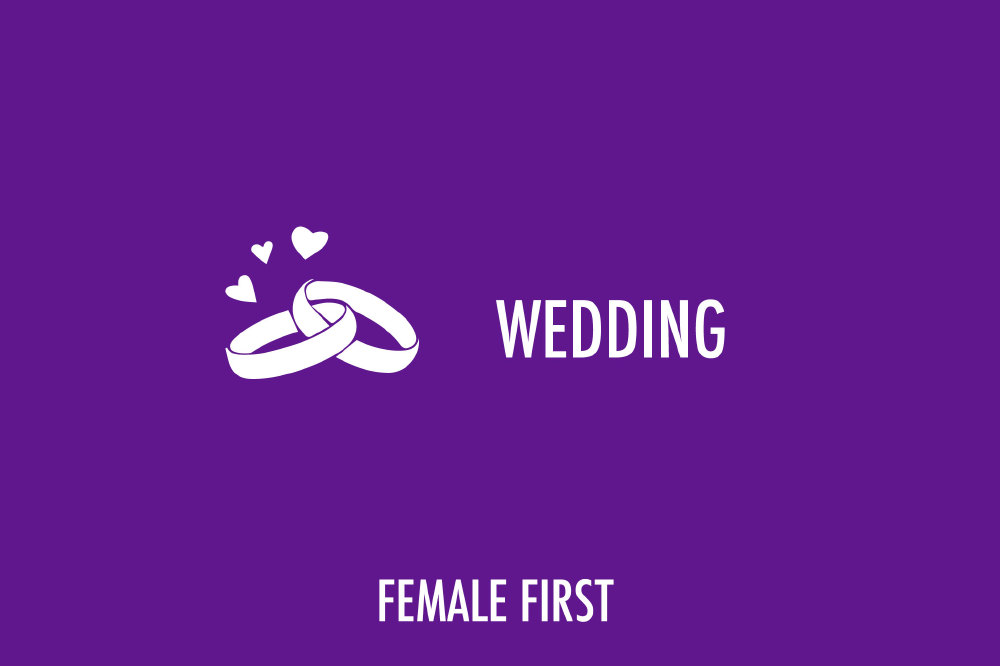When the moment comes to look for wedding rings, you will already be head over heels with excitement. It is a big purchase, for an even bigger occasion, and you may feel overwhelmed by the plethora of choices. Should you pick a simple or an elaborate ring? How should you coordinate it with your engagement ring? Do you opt for a piece of antique jewellery or a brand new piece? Which precious metal should you opt for? Every bride-to be will have personal preferences, and their own unique style, so we can’t give you all the answers! But we can point you in the right direction, particularly when it comes to which colour gold suits which skin tone.

What should you be looking for?
As tempting as it may be to fall in line with current jewellery trends, fashions aren’t universally flattering. Your unique style and colourings are more important when considering wedding rings. When you find a perfect piece, it will illuminate you, bring out the colour in your eyes and hair, and really enhance your look.
You don’t want to fall into the trap of purchasing a beautiful piece of jewellery without considering your skin’s undertones. It may look gorgeous, but when you put it on something just won’t feel right.
Undertones fall into three categories: cool, warm, and neutral. They are the colours beneath the skin’s surface, and they dictate whether or not a piece of jewellery or clothing will suit you. You can easily figure out which undertone you have by looking at your veins. If your veins appear greenish in tone, you probably have warm undertones. Blue or purple veins indicate cool undertones, and if yours appear colourless then your undertones are neutral. Now, once you’ve identified your undertones, read on to find out which metal to pick for their wedding ring.
Warm tones
For anyone with warm undertones, it is best to emphasise your glow with bright, warm metals. A wedding ring with a yellow gold band would be suited to someone with this skin tone. As would any jewellery set in rose gold or gold with a copper hue. Although diamonds are a traditional look for wedding rings, those with a warm undertone can freely play with the idea of other gemstones to set-off your wedding band. Stones with gentle hues such as citrine, turquoise or yellow diamonds, would all look stunning against a warm skin tone — so consider opting for something a little unusual!
Cool tones
For the cool toned people out there, the best advice is to work with your skin tone, not against it! Choose light coloured metals such as platinum, white gold and silver, as they will enhance pale skin and bring a freshness to your look. Think of an ‘English rose’ aesthetic — pale skin and striking features will look fantastic with sleek silver jewellery. If you want to make a statement, these metals will pair well with a bright gemstone. Gemstone alternatives to diamond wedding rings are growing in popularity and a wedding ring featuring a small ruby or emerald would complement this skin tone perfectly, if you are looking for something more colourful than the traditional gold band.
Neutral tones
If your skin falls under the ‘neutral skin tone’ category, then you have a much wider variety of options to choose from. Pretty much anything will work with those lucky enough to have this tone. Choose from yellow gold, platinum, rose gold, or any other precious metal that takes your fancy! Neutral skin toned people can also go one step further and mix their metals — wear multiple golds together and watch how the combination makes your glow!
Hopefully this has given you a little guidance when it comes to making the important decision! A wedding ring is something that you will wear each and every day, so it important to take your tones, style and personal tastes into account. It is your special day of course, so your judgement is paramount. These are useful guidelines, but at the end of the day, there are no solid rules. When you see the glisten of that perfect wedding ring, you will know it is the one for you. Remember, this instant connection is more important than any set rules!
Article courtesy of AC Silver
Tagged in Wedding Ring

